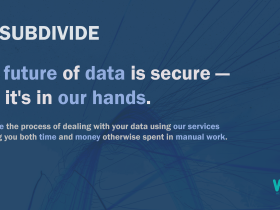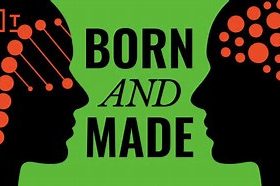By Upwork
Businesses and professionals have always looked for the best ways to use data, offering insights into their industries and helping them make better decisions. But finding the right tools hasn’t always been easy.
AI has changed things. A reported 73% of businesses are prioritizing AI today over other technology advances. As AI technology continues to improve and make breakthroughs, how businesses operate will change to adapt to these new tools.
These changes are coming fast thanks to generative AI—with both commercial and open-source companies competing to release products and gain popularity. Many AI experts have switched from research to private industry jobs to build new products for businesses and individuals, so there’s plenty of talent to build AI tools that help everyone do more.
This article explains what AI is, describes some applications that can help e-commerce businesses and startups do more, and shares how freelancers can use AI to get more done. You’ll also learn a few things to watch for when using AI to ensure you get accurate information.
What is artificial intelligence (AI)?
Artificial intelligence (AI) is a field of computer science and data science that uses software to learn how humans think and process information. It starts by taking a massive amount of human-generated data—think text, images, and video—and uses deep learning techniques to create machine learning models based on that data.
Once an AI evaluates a data set and creates models based on it, data scientists can use that data to generate information based on what it learned. AI can begin to reason with what it learned, generate content based on inputs, and help businesses and professionals accomplish more in less time.
How businesses can use AI
Creating AI models is all well and good, but how does it help businesses? Let’s look at how organizations can leverage AI to improve every part of their business.
Enhanced customer experience
Helping customers quickly isn’t always possible—you might experience periods of high support volume without resources to get to everyone in time.
You can train conversational AI chatbots and virtual assistants on your product information to give your customers immediate attention. You’ll reduce waiting times, get people the help they need, and improve customer satisfaction.
AI is also useful for building personalized shopping experiences. AI can look at a customer’s current and past buying habits, compare them to customers with similar interests, and create personalized recommendations—something businesses can use to encourage more sales.
Starbucks is an organization currently making use of AI to offer a better customer experience. The coffee chain uses AI with its rewards program to track consumer purchasing habits over time and recommend products through email relevant to customer preferences.
Data analysis and insights
One of the best benefits of AI is its ability to comb through big data quickly. Give your AI system as much information as possible, let it handle data analytics on the information, and get insights into what the AI found. AI can find market trends, look for patterns, and offer cost-saving analyses.
You aren’t stuck in the past or present with AI, either. AI tools can use current and historical data to create predictive models for the future. You can use this data to manage inventory, predict customer behavior, and reduce future risk.
The Weather Company uses AI to help this process. People need reliable weather forecasts, and using AI to help predict weather trends allows for more accurate weather predictions that keep people safe.
Process automation
Most businesses have repetitive tasks—you enter spreadsheet data into an application, process and analyze image scans, or manually review documents for errors. AI can help you with all these tasks.
Robotic process automation (RPA) software can learn to automate much of your business’s work. You can automate data entry, scheduling, and other repetitive work. This results in more productivity, better data accuracy, and reduced costs.
Coke is able to do this by using AI in their supply chain. They use AI to automate checking orders, vetting vendor bids, and other parts of managing the supply chain.
Fraud detection and security
Cybersecurity and fraud are growing problems across businesses. Companies may face new threats daily; even with a reliable cybersecurity team, there’s always the chance something will slip through the cracks.
AI systems can keep a constant watch over businesses in real time by processing an enormous amount of data at once—something that’s challenging for a human. As a result, businesses can gain better insight into the cyberthreats and fraud attempts they face and shut them down before they become a problem.
Major credit card processors like AmEx have been doing this for a while. AmEx has a fraud detection process using AI to help humans find and stop fraud from happening.
Demand forecasting and inventory management
Understanding future product demand is vital for optimizing inventory and customer demand. A business that orders too little inventory risks running out if it has too many buyers. A business that purchases too much will have excess inventory in storage, resulting in higher carrying costs and reduced cash flow.
AI tools can look at your historical data to predict future demand, finding trends that aren’t always visible to the human eye. This data can help you order the ideal amount of inventory to meet demand.
Major retailers have been some of the first companies to invest in AI tools for inventory management. For instance, Walmart uses AI to anticipate customer demand and order the right amount of inventory across their store network.
Intelligent marketing and advertising
AI applications can offer a lot to your marketing campaigns by providing more customer information. You can understand customers’ preferences, problems, and buying habits.
Forecasting and inventory management are two of the biggest benefits you’ll see. Knowing your future demand can help you calculate your inventory needs and implement an efficient inventory system.
You can also use automated ad platforms to streamline the advertising process. AI can help with ad placements, budget allocation, and audience targeting—all of which can save time, reduce costs, and improve your return on investment (ROI).
Adspert offers many of these features, allowing customers to use AI to automatically optimize a lot of their ad campaigns.
Supply chain optimization
AI solutions are playing an increasing role in the supply chain. With so many moving pieces and new data to collect, the supply chain is the perfect use case for AI to analyze data and generate insights on demand.
Forecasting and inventory management are two of the biggest benefits you’ll see. Knowing your future demand can help you calculate your inventory needs and implement an efficient inventory system.
AI can also help you automate warehouse operations, optimize your delivery routes for increased speed, and find areas of improvement.
AI can also help you automate warehouse operations, optimize your delivery routes for increased speed, and find areas of improvement. UPS has AI using their large amounts of data to determine when and where to put trucks on the road to optimize delivery times.
How professionals can use AI
Businesses aren’t the only benefactors of AI development. Professionals working independently and with other organizations can use AI to improve workflows and get more done.
Intelligent task automation
Professionals handle a lot of little details daily, including email, data entry, appointment scheduling, and more.
Fortunately, you can automate a lot of these tasks using AI. For example, AI can automate email replies, find the ideal time to schedule meetings, and automatically gather data.
Tools like Zapier allow you to connect AI interfaces that determine what you want by analyzing your text. This allows you to connect to the automation sequences the Zapier platform offers.
Language translation and transcription
Translation and transcription are often time-consuming tasks for professionals. You may have to pore over hours of audio and video for transcription. And translation requires understanding the audio or the text on the page.
New AI tools like Whisper make translation and transcription much easier. Trained neural networks use automatic speech recognition (ASR) to automate the translation and transcription process. Simply give the program your input and wait for the results.
AI tools are also making document processing easier, whether it’s learning from existing data or new input from physical documents and PDFs using optical character recognition (OCR) technology. Nanonets offers this service by allowing companies to upload their data in whatever form and learn from the information provided.
Summarizing research
Every professional needs to stay on top of the most recent research in their field. As industries change, new information continues to detail what’s happening. Every professional should know and understand these changes.
Change happens so fast that many people don’t have time to read every news article. AI can help by summarizing news and research.
New generative AI tools do an amazing job of summarizing content. Feed the information you’re reading into a tool, and you’ll get a summary of everything.
SciSummary is an example of a tool with this capability. Give the tool a link to the research you want to summarize, and it uses OpenAI’s GPT technology to recap the article. This provides you with the most relevant information without reading the entire paper.
Content generation and writing support
Most professionals deal with some form of content generation. You might produce content and need a second set of eyes to verify your work.
AI writing tools are changing how content is made. Since Microsoft and OpenAI released ChatGPT at the end of 2022, many new tools have been released that help users flesh out blog posts, write emails, summarize news sources, respond to questions, and complete many other tasks. Ask the chatbot for information about a subject, and it will use natural language processing (NLP) to analyze your request and do its best to give you what you want.
Still, there’s more to getting good results (if you have complicated questions). Prompt engineering is a process where you phrase your questions to help the AI understand your request and provide better results.
You also have options for checking your work. Tools like Grammarly check grammar and spelling to help you present content in the best possible way.
Design and creativity support
Text content isn’t the only task AI is good at generating. It can also create images based on textual prompts.
Tools like Midjourney, Stable Diffusion, and DALL-E 2 are trained using computer vision techniques to learn how to transform text into images. They can generate images based on given prompts, using the patterns and knowledge they learned from training data.
You won’t always get exactly what you want, so image generation tools are better for creative inspiration. Use them as tools that assist in the creative process rather than using them to completely replace human design skills and expertise.
In short, image generation tools can provide unique ideas and transform them into your own unique design.
Time and project management
Organization is one of the most important parts of freelancing—without it, you can’t prioritize tasks (or your time). That’s why many professionals turn to time and project management tools.
AI is starting to make its impact in this space. Notion is a tool that introduced AI capabilities in the software, helping professionals generate meeting notes, automate task creation, summarize pages, and much more.
Asana AI is another release that allows project managers to streamline project management. Managers can read project summaries, ask questions about projects, and get a writing assistant when entering project details.
Each of these tasks may seem small, but they can lead to massive time savings when added together.
Pricing and revenue optimization
Knowing how to price your services isn’t always easy. You may not have the same amount of data as large organizations, so determining the best pricing (beyond making an educated guess) might be challenging.
But AI tools can help you gain more insights. You can use machine learning algorithms (computer programs that learn based on data and use that information to make predictions) to analyze the market and competitors to see the current market conditions—information you need to stay competitive on price and get new customers.
A good example is freelancers wanting to forecast their income. An app like Cushion allows you to examine your historical income and predict what it will be like in the future. This data can help you find slow periods during the year and price your services accordingly to make more money during those periods.
Caveats about using AI
While AI can offer many benefits to businesses and freelancers, there are some important caveats to keep in mind when using it.
- Ethical considerations. Large AI models make use of public—sometimes copyrighted—information. Consider the output of the AI you use and make a note of any copyright considerations.
- Human-added value. You can get great output from AI, but remember that a machine created it. Use humans to add value to the output so it is less generic (e.g., humor, brand voice, tone, and bias).
- Inaccurate facts. AI tools work by predicting what they think a human will do next, which can make AI a convincing liar. Fact-check your AI output to ensure accuracy.
- Privacy concerns. Many AI apps are popping up on the market—some of which may not have the best privacy controls. Think carefully about the proprietary data you give AI systems and if there are legal concerns when doing so.
- Lack of transparency. One of the biggest concerns about AI is that the models are a black box. Even the AI providers don’t fully understand how they work, so you may have challenges understanding the results you get from AI.
- AI bias. AI can show bias—whether from the creators or the training data. You must monitor for biased results and avoid using AI if it goes against your policies.
- AI disclosure. Many people still prefer to talk to humans, so talking to AI bots might be a turnoff. Whether you use AI for social media, your website, or another area of your business, let people know they’re interacting with AI.
Integrate AI into your workflow
As you can see, AI can offer a lot to businesses and professionals, including forecasting future trends to understand market conditions and make better choices, automating tasks to save time and money, and generating text and designs to help your creative juices flow.
If you’re a business owner needing help with AI, head to the Talent Marketplace™ to start your search. Talented AI engineers can handle almost any project imaginable.
And professionals using AI tools can sign up for an Upwork account to browse the AI job section and look for new clients.































Leave a Reply